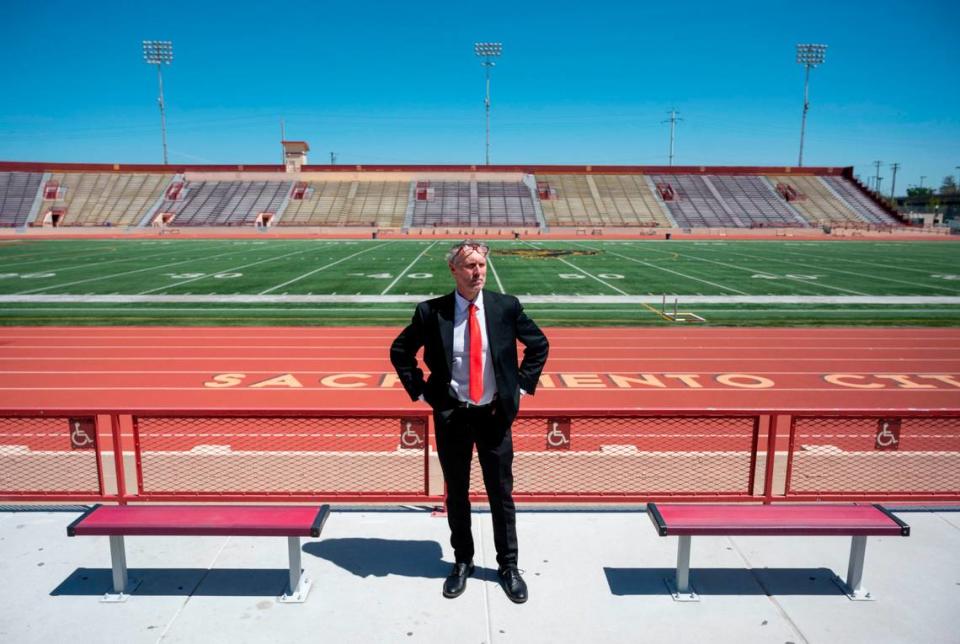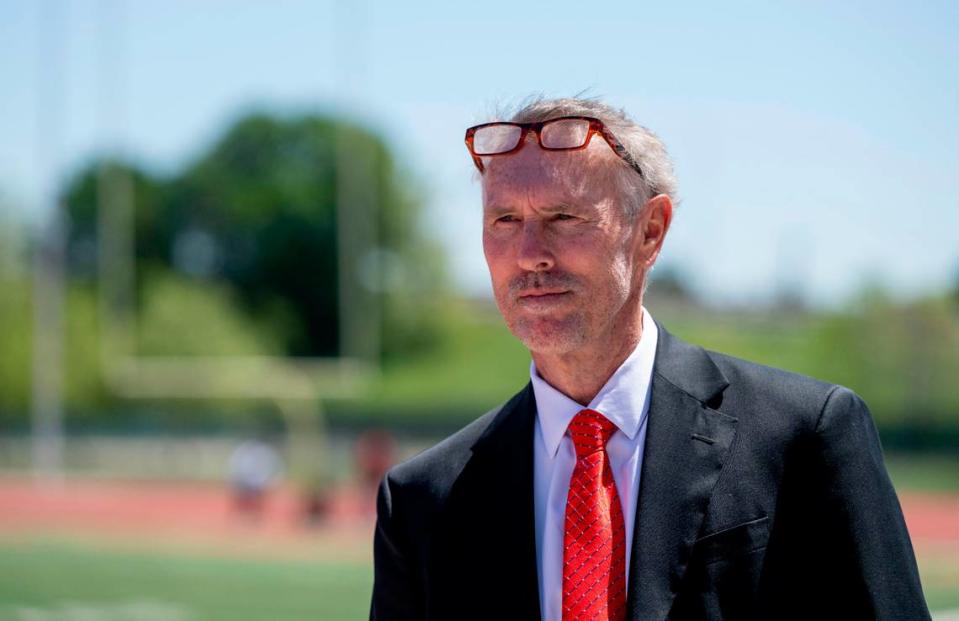Pro football is coming to Sacramento this fall: What to know — and can it work?
Adam Mclean first pondered a venture in professional football in 2001 and came up with the idea of Major League Football.
The plan was to have teams dotted across the country, including small-market cities such as Sacramento, hungry for blocking, tackling and touchdowns with prices a great deal cheaper than the NFL. Not a gimmick league, Mclean stressed. Not a schedule of games in the spring, or indoors, and, as commissioner, Mclean is tasked with getting a lot done in a short amount of time.
He embraces all of it. Mclean was in Sacramento on Thursday, standing inside sparkling and storied Hughes Stadium to discuss the perks of an upstart league that is set to kick off in September for 20 teams, each playing a 16-game schedule with all games on Sunday afternoons.
Hughes Stadium is a nice starting spot. It has housed just about everything imaginable, be it boxing, track and field, Triple-A baseball, rock concerts and, of course, football, which is what the venue was built for in the 1920s.

But can pro football work here when it has failed before, be it the Sacramento Attack of the Arena League more than 30 years ago, or the Sacramento Surge of the World League of American Football in the early 1990s, or the Sacramento Mountain Lions of United Football League from 2010-12?
Each of those leagues had ambitious dreams. None of them were fall leagues, however. Mclean is counting fall football as the key to survival, explaining that the league’s 20 teams are owned by the MLF for at least the first two seasons before exploring sale options for buyers.
“A lot of people compare us to the spring leagues,” Mclean said. “We are not a spring league. We are a fall league. We don’t have six teams. We don’t have four teams all playing at one venue. All of our franchises are playing at their own venues. Our business plan was to go into markets that did not have a professional football team, great markets like Sacramento, like Oakland, like San Diego, Portland, (Oregon). ... We have a very solid business model.”
A spirited and gregarious sort who grew up loving football in Florida, Mclean added that there is never a shortage of players for pro leagues to pick over. It’s sustaining the leagues that are the challenge, of making the product worth paying for and supporting.
“There are 1.6% of college football players that make it to the NFL,” Mclean said. “That’s 98.4% of great ball players left. I’m going to make a bold statement. I strongly feel that we can put a product on this field that’s just as good if not better than any other professional football team. There’s so much talent out there, and they’re hungry to play.”

He added with emphasis, “We’re not a semi-pro league. We are a professional football league in great markets. We’re not Arena ball. We’re not spring ball. We’re fall, and we’re filling the void. Sacramento is a great market for us. We’re very financially stable. We have at least a dozen potential highly-qualified financial buyers ... but we’re not selling anything until after the first or second season.
“We want to develop the product, prove that we are the real deal, work out the kinks the first to second season to create the value. We are working on corporate sponsorships.”
Mclean said he and teams are in the process of hiring general managers, who will then hire coaches and a staff. Each of the 20 markets across the MLF landscape will have a combine/tryouts in June. Teams will play in venues as large as War Memorial Stadium in Arkansas (seating capacity of 53,120), Rentschler Field on the campus of the University of Connecticut (38,000), to Hughes Stadium (20,000) to Laney College (5,500) in the East Bay for the Oakland team.
Mclean found that starting from scratch includes a lot of hurdles, be it other leagues such as the XFL, or the pandemic. There was the initial goal of kicking off last fall. Now it’s firm for Sept. 10. Mclean said football for players and fans is “an addiction.” Mclean has had discussions on how to air the games — TV or livestreaming — adding, “build it and they will come.”
The MLF teams are split among the Eastern Conference and Western Conference. Sacramento is in the North Division of the Western Conference, which will include Oakland, Portland and Sacramento. Because football is such a big deal, Mclean said it made sense to have teams in smaller places in Iowa, Kentucky, Arkansas, North Carolina and Connecticut but also in large cities such as Dallas, Houston, San Diego and New York.
Mclean’s first nationwide, whirlwind stop was Oakland, then Sacramento and then Portland. He joked that at every stop, he is already “creating competition,” such as telling one city that another is ready to kick some football fanny in the other.
For more information on the league, its teams, schedules and tickets, go to https://majorleaguefootball.pro.


